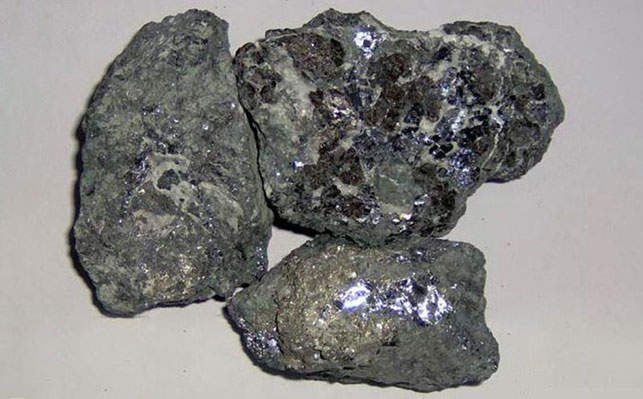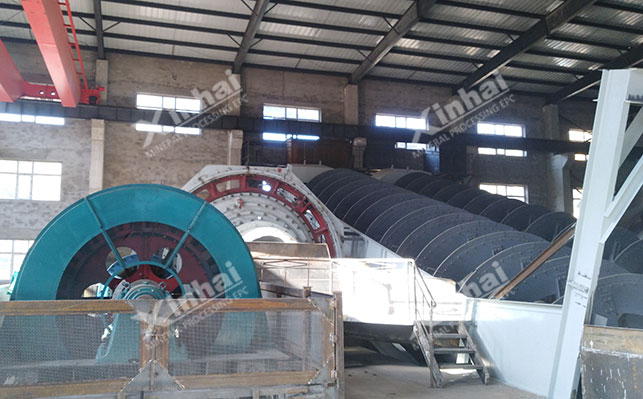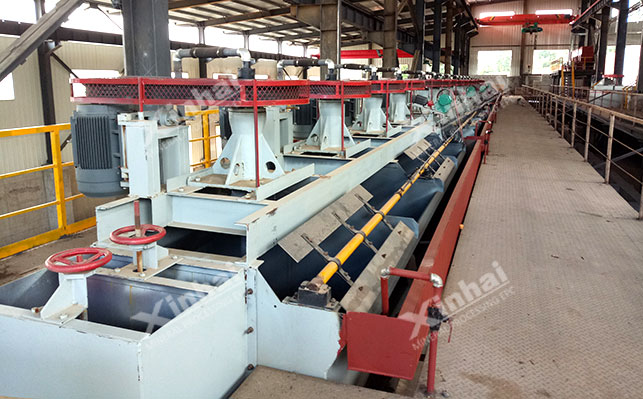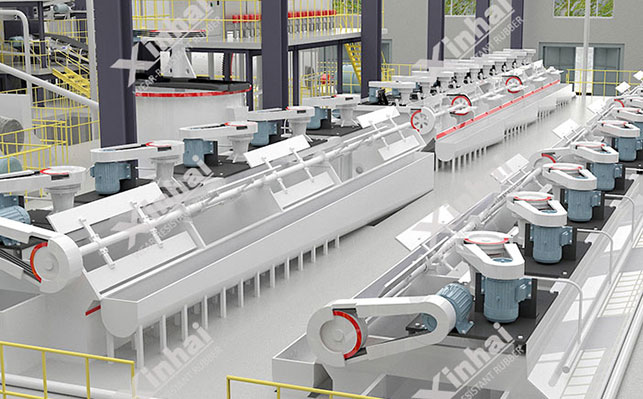
15311826613
Click to add WeChatAs an important strategic metal, molybdenum is used in many fields such as steel, electronics, chemical industry, aerospace, etc. With the development of the global economy, especially the growth of demand for high-performance materials in emerging industries, the demand for molybdenum has shown a steady upward trend. However, in sharp contrast, the reserves of molybdenite, the main molybdenum ore resource, are gradually decreasing. This contradiction between supply and demand makes the development of other types of molybdenum ore resources more and more important. In-depth research on the beneficiation technology of various types of molybdenum ores is of great significance to ensure the stable supply of molybdenum resources. Below we introduce molybdenum ore beneficiation from two aspects: molybdenum ore type and molybdenum ore beneficiation technology.

Single molybdenite is a typical type of molybdenum ore, and its molybdenum grade is usually above 0.08%. This type of molybdenum mineral has a simple composition and mostly exists in the form of molybdenite (MoS₂). It has a layered crystal structure, weak interlayer bonding, and good natural floatability, which provides favorable conditions for subsequent mineral processing.
Copper-molybdenum ore: According to statistics, 48% of the world's molybdenum production comes from copper-molybdenum ore. Molybdenum and copper metals are closely coexisting in the minerals, the molybdenum grade is relatively high, and it is often accompanied by non-ferrous metals such as lead, gold, and silver. In this type of copper-molybdenum mineral, because molybdenum mineralization is closely related to copper mineralization, it is usually necessary to comprehensively consider the recovery of multiple metals during mining and mineral processing.
Highly oxidized molybdenum ore: Molybdenum mainly exists in an oxidized state, such as calcium molybdate ore (CaMoO₄). The molybdenum grade of this type of ore is also high, but due to its high degree of oxidation, the mineral properties are different from those of sulfide molybdenum ore, and the difficulty of mineral processing is relatively large.
The structure of complex molybdenum ore is very complex, and its mineral composition is diverse. Molybdenum minerals are often closely intertwined with a variety of gangue minerals and other metal minerals. This makes it very difficult to separate and purify molybdenum during the beneficiation process. Moreover, molybdenum coexists with rare earth elements, niobium and tantalum and other rare metals in some molybdenum ores, and the ore structure is dense, so it is difficult for traditional beneficiation methods to achieve ideal results.

Coarse grinding and rough selection and multiple selection process: For single molybdenum ore, coarse grinding and rough selection are usually adopted. The ore is first crushed to a certain particle size, and then the natural floatability of molybdenite is used for flotation. In the rough selection stage, most of the molybdenite is recovered as much as possible to obtain a rough molybdenum concentrate. Since the rough molybdenum concentrate still contains a certain amount of impurities, it needs to be refined multiple times. In the selection process, the grade of the molybdenum concentrate is further improved by adjusting the flotation reagent system and the operating parameters of the flotation equipment. For example, in the process of concentration, the amount of collector can be appropriately increased to enhance the collection capacity of molybdenite, and the amount of frother can be adjusted to control the stability of the foam, so that molybdenite can be better enriched in the foam product.
Fine grinding process: Molybdenite is relatively soft, and it is easy to be over-crushed during the fine grinding process, resulting in the destruction of its crystal structure, thus affecting its floatability. Therefore, in the beneficiation of a single molybdenum ore, multiple fine grinding is usually adopted. After each fine grinding, flotation is carried out to gradually improve the grade of the concentrate. The process mostly adopts the stage grinding-stage separation process, which divides the grinding process into multiple stages, and flotation is carried out after each stage of grinding, so that the occurrence of over-crushing can be reduced while ensuring the full dissociation of molybdenite. In this way, the grade of molybdenum concentrate can be effectively improved to meet the requirements of industrial production.
Beneficiation method of copper-molybdenum ore: Preferentially adopt the mixed flotation process to float copper and molybdenum minerals together to obtain a copper-molybdenum mixed concentrate. In the mixed flotation process, the collectors used are usually xanthate and black medicine, which have good collection performance for copper and molybdenum minerals. At the same time, an appropriate amount of foaming agent, such as pine oil, is added to promote the formation of foam. After obtaining the copper-molybdenum mixed concentrate, copper and molybdenum separation flotation is carried out. Common separation methods:
· Conventional flotation method: In the copper-molybdenum separation flotation, organic or inorganic agents are used for flotation. For example, organic inhibitors such as sodium thioglycolate are used to inhibit copper minerals so that molybdenum minerals can float out preferentially. At the same time, non-polar oil (such as kerosene) and water glass are added as adjusters. Non-polar oil can enhance the hydrophobicity of molybdenum minerals, and water glass can inhibit gangue minerals and improve the quality of molybdenum concentrate.

· Nitrogen filling flotation: Nitrogen filling flotation is a more environmentally friendly flotation method. During the flotation process, nitrogen is filled into the pulp. Nitrogen can reduce the dissolved oxygen content in the pulp and reduce the oxidation consumption of inhibitors, thereby reducing the use of inhibitors and reducing pollution to the environment.
·Passivation process: The passivation process is to add specific chemical agents to the slurry to make the copper mineral surface passivate and reduce its floatability. Common passivators include potassium permanganate, potassium dichromate, etc. During the passivation process, these oxidants react with the active sites on the surface of the copper mineral to form a passivation film, thereby inhibiting the flotation of the copper mineral.
·Thermodynamic acid-base reaction method: Copper-molybdenum ore has weak magnetism, and the thermodynamic acid-base reaction method is suitable for the separation of weakly magnetic fine-grained minerals. This method utilizes the difference in surface properties of minerals under different temperatures and pH conditions, and realizes the separation of copper-molybdenum minerals by controlling thermodynamic conditions and acid-base environment.
Other molybdenum-containing polymetallic ore dressing methods: For polymetallic ores such as quartz titanium alloy molybdenum ore, the dressing process is relatively complicated. Generally, the mixed molybdenum concentrate is separated by flotation. In this process, according to the difference in floatability between molybdenum minerals and other minerals, appropriate collectors and adjusters are selected to preliminarily separate molybdenum minerals from minerals such as quartz and titanium alloys. Then, the gold is oxidized and selected to recover the gold. Since gold usually exists in a free state or in the form of symbiosis with other minerals in the ore, the gold can be exposed through oxidation pretreatment, which is convenient for subsequent recovery. Common oxidation methods include roasting oxidation and bacterial oxidation.

With the continuous increase in molybdenum demand and the gradual decrease in molybdenite resources, the development of other types of molybdenum ore resources has become an inevitable trend. In-depth understanding of the characteristics of different types of molybdenum ores and mastering advanced mineral processing technology are of great significance to improving the utilization rate of molybdenum ore resources and ensuring the stable supply of molybdenum resources. In the future molybdenum ore beneficiation field, it is necessary to further strengthen technological innovation, develop more efficient and environmentally friendly mineral processing technology for complex molybdenum ores and other difficult-to-be-benefit ores, and optimize the existing mineral processing technology to improve the economic and environmental benefits of molybdenum ore beneficiation to meet the growing global demand for molybdenum resources.